Sanctuary Preservation Areas (SPA’s) and Research Only Areas (ROA’s) are designed to protect shallow, heavily used reefs from degradation. The actual size and location of these zones have been determined by the examination of user patterns, aerial photography, and ground-truthing of specific habitats. There are currently 18 small SPA’s scattered around the Keys, mostly on the reef line. The restrictions on these SPA’s are primarily no fishing. There is also no anchoring on living or dead coral, no touching or standing on living or dead coral, and no discharge of any matter except cooling water or engine exhaust. Boats are required to use permanent mooring buoys located on the site. SPA’s are clearly marked with large Yellow round buoys. ROA’s require a research permit to conduct any activity within. ROA’s provide a place with minimal disruption. You will need to contact the FKNMS if you want permission to work in a SPA or ROA.
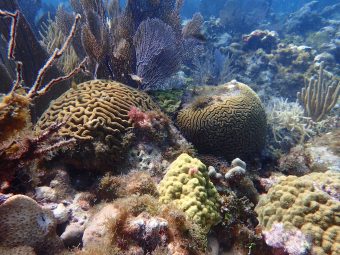
The coral reefs in the Florida Keys make up the most extensive living coral reef system in North America, most of which can be accessed from KML, either directly by boat or by trailering KML vessels to the upper or lower Keys. Nearest to the laboratory is Tennessee Reef, located 5 miles south of Long Key, although any reef or patch reef between Alligator Reef and Sombrero Reef is accessible without trailering. Experienced KML staff can help you locate the specific coral species or type of reef necessary for your research throughout the Florida Keys. KML staff also know of many “less-traveled” reefs which often make excellent research sites. Many nearby, shallow patch and barrier reef areas are quickly accessed from the laboratory for educational groups. Contact the Laboratory if you have specific questions about coral reefs in the Florida Keys.
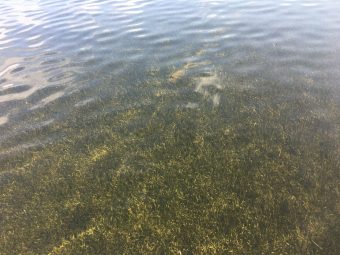
Seven species of seagrass make up Florida’s nearly 2 million acres of seagrass habitat. These forests of seagrass help maintain water clarity, stabilize the bottom, and provide food and shelter from predators to the numerous species of animals that live there. Large, healthy areas of Thalassia testundium and Syringodium filiforme are located near the laboratory in Florida Bay, within and outside of Everglades National Park. Areas of other types of seagrass as well as most seagrass-dwelling organisms can also be located near Long Key on either the ocean or bay sides of the island. Many seagrass-related research projects have been based from the KML over the last two decades in addition to the hundreds of groups just visiting for a snorkel trip. Contact the lab if you have any other questions about seagrass habitat near the KML.
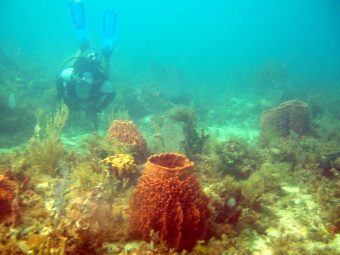
Hard bottom habitat is made up of sessile organisms attached directly to limestone rock covered with a few centimeters of sediment. In the Florida Keys, large, crevice-laden loggerhead sponges, numerous octocorals and thick mats of red macroalgae dominate hard bottom communities. These marine plants and large invertebrates provide shelter for countless small animals such as young carribean spiny lobster, Panulirus argus. Hard bottom is markedly different between oceanside and bayside areas of the keys, changing in species type, richness, structural complexity and in the motile fauna found there. Recent efforts to catalogue Florida Keys hard bottom have been based out of KML as the lab offers easy access to hard bottom areas of all types, most of which are within just a few minutes of the facilities.
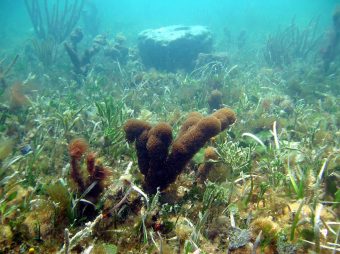
The Florida Keys offer huge expanses of flats, sandbars, and grass banks. These areas are prime feeding grounds for schools of bonefish, permit, tarpon, barracuda, and several species of sharks. Banks commonly have Halimeda calcareous algae; the finger coral Porites diveracata; invertebrates such as echinoderms, urchins, sea stars; and bivalves, all of which are adapted to strong tidal currents fluctuations. Flats are shallow areas with scattered grassbeds with incorporated Halimeda, invertebrates (echinoderms, urchins, sea stars), bivalves, and elasmobranchs such as nurse sharks, bonnethead sharks, and stingrays.
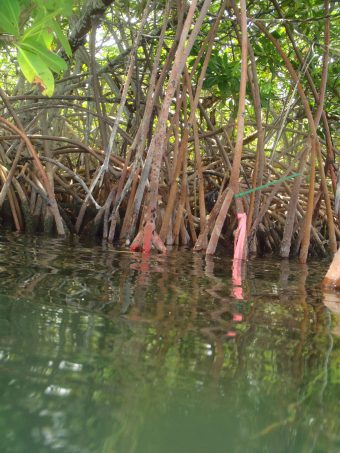
Mangroves and their extensive, protruding root systems represent the basis for one of the most important and extensive marine communities in southern Florida. The structurally-complex environment provided by their proproots is substrate on which algae, sponges, tunicates, bivalves, bryozoans, crustaceans and others can grow while fish and motile invertebrates inhabit the protected spaces within. Mangrove communities are a unique opportunities for study, inviting inquiry by students and researchers alike into the evolutionary, ecological, and behavioral processes that shape the lives of the organisms that live there. KML offers access to pristine mangrove habitat within walking distance on Long Key and by boat to the mangroves stands of Florida Bay and Everglades National Park.
From the FKNMS Historic Shipwreck Trail: There is a trail of historic shipwrecks scattered along the treacherous coral reefs and buried in the sandy shallows a few miles off the Florida Keys. The shallow reefs of the Florida Keys and the sudden changes of weather posed a threat to the safe passage of ships through the Straits of Florida on their return voyage to Europe from the Caribbean. There are nine sites on the Shipwreck Trail which represent three broad periods of Keys maritime history: European Colonial, American, and Modern. Two of these wrecks lie in the vicinity of KML, the Adelaide Baker and the San Pedro. Both sites make nice snorkeling sites, with lots of fish and even some replica canons (San Pedro). Check out the FKNMS Shipwreck Trail for more info.
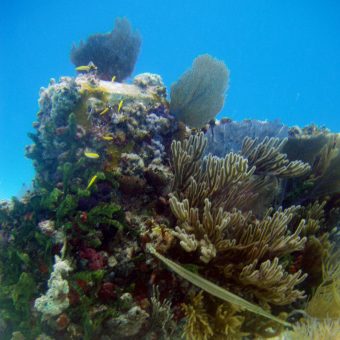
In addition to the natural reefs, the Florida Keys are also home to a number of artificial reefs. Formed by dumping man-made structures of a variety of sizes into the water, these artificial habitats provide shelter for marine fish and invertebrates, open areas for hard and soft corals to colonize, and may take some pressure off of some of the natural reefs in the FKNMS. Many of these reefs have been underwater for years and are now well-colonized by marine life. Near the Long Key, one of the most significant artificial habitats is the bridge rubble. This was the excess concrete and steel roadbed removed from the old overseas highway when the new highway was built during the 1980’s. These piles make a great place to visit or conduct experiments away from the heavily used natural reefs.